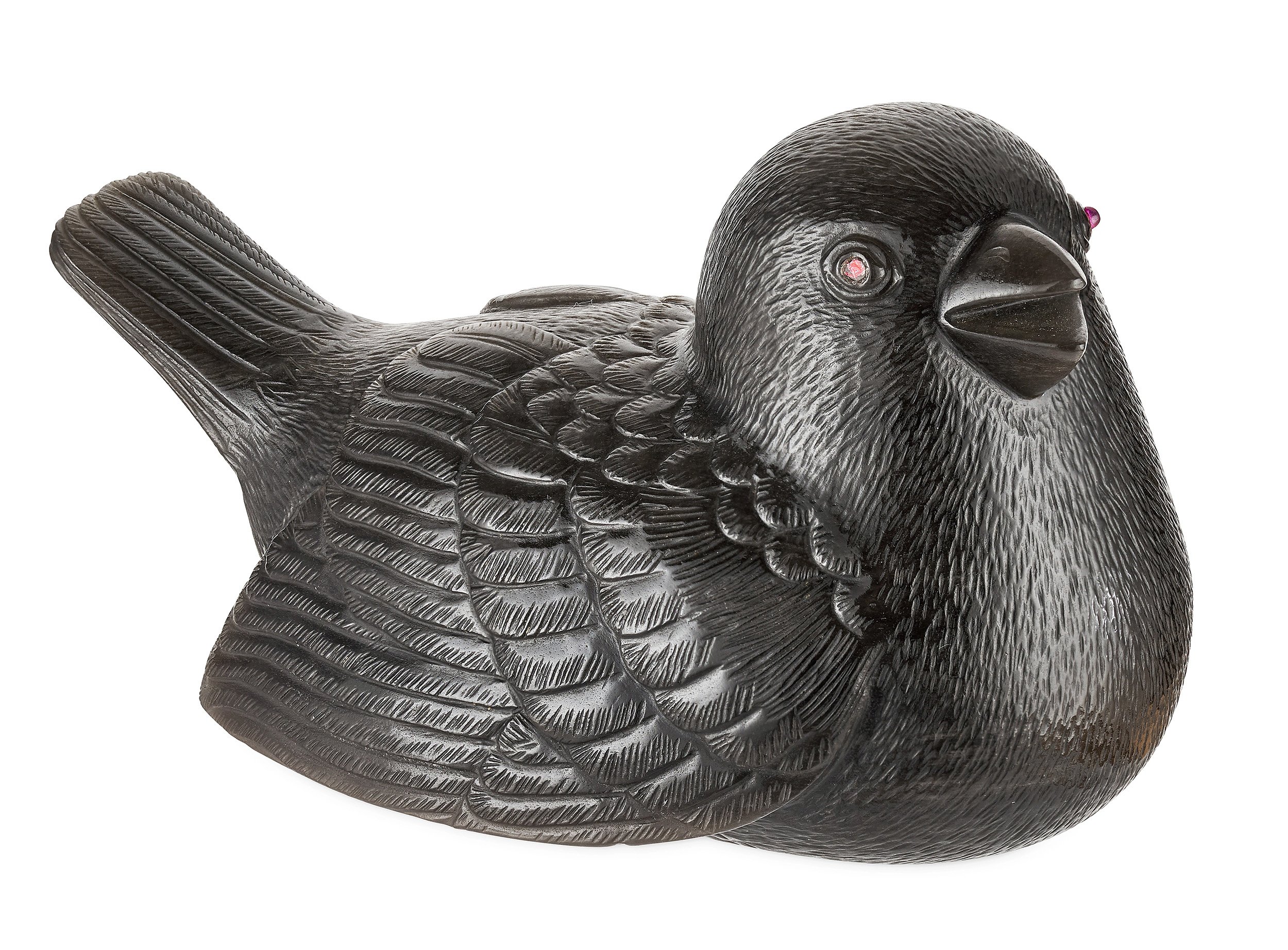
A historic collection of small carved animals created by Fabergé made a clean sweep at U.K. auction house Elmwood’s this week. The menagerie of early 20th-century hardstone sculptures fetched a collective £2 million ($2.5 million), doubling its presale estimate, after rounds of fervent bidding from around the world, according to the auctioneer.
The 20 carvings boast a storied history. Most were owned by the Russian imperial family, some others by European royalty and the British aristocracy. All were made from a diversity of material—bowenite, quartz, agate—and reflect Fabergé’s craftsmanship as much as the influence of netsuke, the Japanese art of miniature sculpture.
A rare Fabergé jeweled silver and gold mounted life-size agate model of a dormouse by Fabergé (ca. 1900). Photo: © Elmwood’s.
Among the sale’s highlights was a life-sized, agate dormouse carving, detailed right down to its silver whiskers. Gifted to engineer Karl Wilhelm Hagelin by Immanuel Nobel, who established the Nobel Prize, the piece made £143,750 ($183,000) against a high estimate of £120,000 ($152,000).
Another agate sculpture of a duckling, once owned by Emily Yznaga, sister of the Duchess of Manchester, and still in its original case, realized £130,000 ($165,000), almost tripling its high estimate.
A jeweled and gold-mounted agate model of a duckling by Fabergé (ca. 1900). Photo: Elmwood’s.
Meanwhile, an obsidian model of a carrier pigeon with a tilted head netted £100,000 ($127,000). Its European buyer is receiving quite the artifact: the work was a gift to Princess Thyra of Denmark from her niece, Grand Duchess Olga Alexandrovna of Russia, and comes accompanied by a handwritten note that reads, “From Olga of Russia Xmas 1907.”
A jeweled gold mounted carved obsidian model of a carrier pigeon by Fabergé (ca. 1907). Photo: Elmwood’s.
But the auction’s star lot was a jeweled obsidian model of a dust-bathing sparrow, carved in the style of netsuke master Horaku. The sculpture was the subject of a 10-minute bidding war, according to Elmwood’s, before it was won by a Japanese collector for £525,000 ($668,000), soaring past its £60,000 ($76,000) high estimate.
“We are thrilled with the result of today’s sale, which is testament to the exceptional provenance of each piece in the collection,” said Elmwood’s in a statement. “We saw lively bidding from around the world on the telephones, as well as online, with fierce competition for the top lots.”
A jeweled nephrite study of a bear by Fabergé (ca. 1905). Photo: Elmwood’s.
Carl Fabergé, an avid collector of netsuke, began selling these animal carvings from his St. Petersburg storefront in the early 1890s. Though unsigned, the house’s pieces were distinguished for imbuing their subjects both large and small with whimsy, personality, and sometimes humor.
These works quickly drew an aristocratic and noble clientele, more so when Fabergé began selling them from his London store, which opened in 1903 (the elephant was the most popular model). In 1907, Fabergé was commissioned by King Edward VII and Queen Alexandra to create carvings after all the animals on their Norfolk estate. The resulting collection of dogs, horses, ducks, and hens remains the largest group of Fabergé animal carvings in existence.
A jeweled bowenite figure of a hippopotamus by Fabergé (ca. 1900). Photo: Elmwood’s.
The collection that went to auction was assembled over the past eight years by an anonymous seller with a passion for Fabergé’s animals. Elmwood’s deemed the hoard notable not just for its provenance, quality, and condition, but its increasing rarity.
“With many of these pieces not being offered on the open market for decades, or even ever,” it said, “clients saw a unique opportunity to acquire these exceptional pieces to treasure for years to come.”